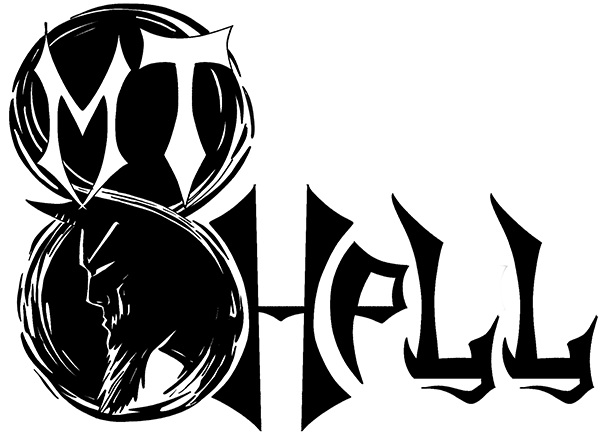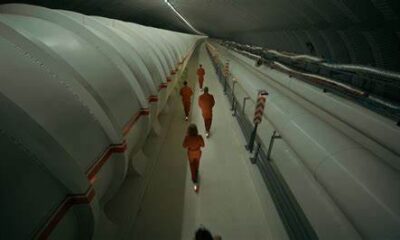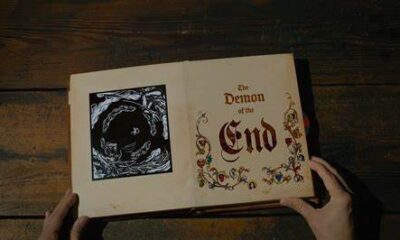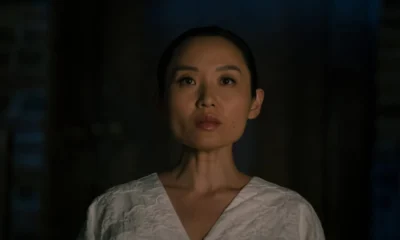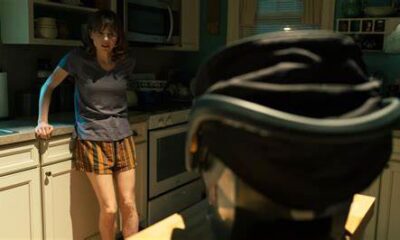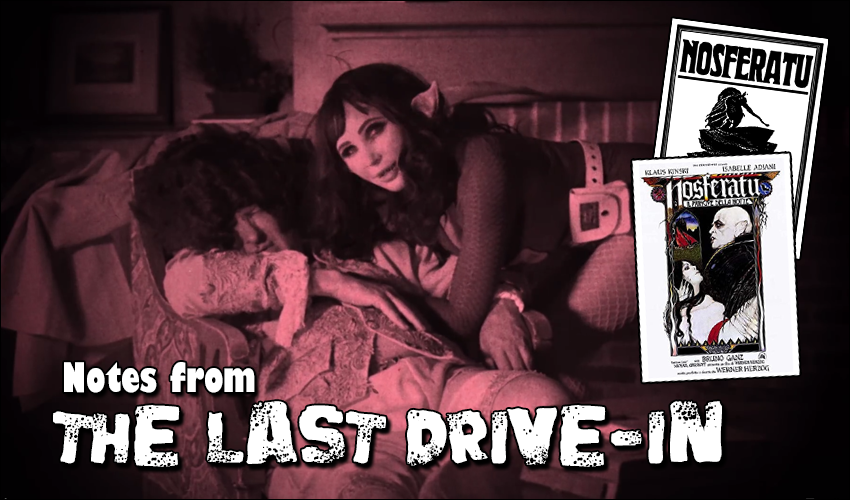
Notes from the Last Drive-In: S4E4 – ‘Nosferatu’ X 2
Welcome back, boys and ghouls, to Haunted MTL’s Notes from The Last Drive-In. This week Joe Bob Briggs and Darcy the Mail Girl get a little German with a pair of horror classics. Jawhol! We have been treated to 1922’s Nosferatu and 1979’s Nosferatu the Vampyre.
But how was the show this week? Did the episode’s theme click a bit better than the previous two episodes? Let’s find out with this review and recap of Shudder’s The Last Drive-In with Joe Bob Briggs, season 4, episode 4.
Nosferatu (1922)
Nosferatu is F.W. Murnau’s 1922 vampire horror film that loosely adapts Bram Stoker’s epistolary novel Dracula. The film is a silent German expressionist horror film that stars Max Schreck, Greta Schröder, and Gustav von Wangenheim. The film, set in 1838, follows estate agent Thomas Hutter (Gustav von Wangenheim), who travels to Transylvania to secure the final documents allowing for client Count Orlock (Max Schreck). Orlock seeks to move to Wisborg into a house across the street from Hutter’s, where his wife Ellen (Greta Schröder) awaits his return.
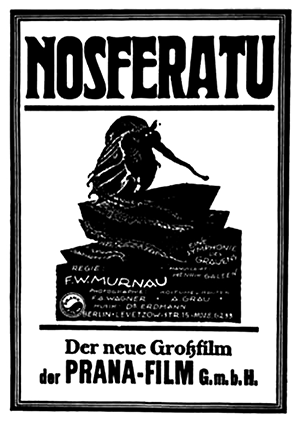
In many ways, the idea of reviewing Nosferatu is pointless because the film has been dissected and evaluated to undeath for over a century now. Thanks to copyright law, the film is widely distributed and can even be found, fully embedded, in its own Wikipedia entry. I am not sure how much I could add to the discourse surrounding the film beyond what has already been said for a hundred years.
I do not think Nosferatu is a perfect film. It can be pretty close at times, but the film we see these days reconstructs something we’ll never be able to truly experience again, cobbled together from salvaged prints. Florence Stoker’s irreparable harm to the preservation of the art is well documented. As a result, we’ll never quite capture the fundamental, ethereal experience of what Nosferatu was. Nosferatu isn’t quite a Dracula adaptation, and yet it is, occupying a strange and uncanny space between adaptation and parody that does not entirely succeed in either direction. However, the middleness of the film allows it to work as well as it does. The story may not be as complex as Stoker’s own, but neither is it as messy. This is the Laconic Dracula, boiled down to the essentials, warts and all.
The character of Thomas Hutter is useless in the film beyond being a plot device. The real struggle is between Ellen and Orlock, but even that goes a metaphysical route that is somewhat sloppily handled. With that said, Schröder and Shreck are excellent in their respective roles. While the story has many weaknesses, it is the elements in telling the story where the film makes its mark.
F.W. Murnau’s direction is terrific. His work with his cinematographers Fritz Arno Wagner and Günther Krampf resulted in a film that, despite its antiquity, feels modern in so many regards, codifying cinematography and staging we still see centuries later. Cross-cutting alone in this film is impressive in what it does for the pacing.
Of course, the film still occupies that rough, transitionary period between the film as its form and the film as a form of recorded play; some performances are overly broad. Some shots are treated flat, stage-like, such as the finale in Ellen’s bedroom. But these are the last vestiges of a bygone era.
I could talk about many aspects of Nosferatu, but it’s all been done before to such a degree that I can probably link this NY Times article that would cover a lot of what I would say.
Joe Bob-servations on Nosferatu (1922)
Joe Bob’s approach to the night was more of a history crash course than usual. This was even down to the fashion choices of Joe Bob Briggs and Darcy the Mail Girl, decked out for a time in Neidermyer clothing, only for Joe Bob to slider progressively further into “pimp” as the night progressed.
If the night had a phrase representing the tone, it would have been “Fuck Florence Stoker,” given her role in nearly wiping away a cinema classic from history. The host segments revolved around the history of German film, a heady topic for most nights. We also dove into Joe Bob’s views on German Expressionism and the film’s legacy. With that said, Joe Bob’s thoughts on whether Nosferatu is a German Expressionist film seem counter to the established view. I wonder if he may be going against the grain to ruffle the feathers of film nerds.
The skit involving a silent film-style seance to contact the cast of the film goes predictably off the rails with the addition of John Brennan and concludes with Darcy biting the neck of Joe Bob. So it was what you would expect for the Drive-In‘s take on a silent film, goofy and affectionate. It wasn’t the best skit of the night, either, which was most impressive about the night as a whole. The best skit belonged to the second film of the night: Nosferatu the Vampyre.
Final Thoughts on Nosferatu (1922)
A cinema classic that is more than a movie, Nosferatu is a captivating work by F.W. Murnau that, despite some issues, still stands as a beautiful and creepy film 100 years after release. The fact we can even enjoy an approximation of the original experience today is not something one should take for granted.
Joe Bob gave the film four stars, which is well deserved. The film is every bit as praiseworthy as it gets. I feel some elements of the film, holdovers from earlier conceptions of what film was, that make Nosferatu a transitionary piece, and some of those legacy elements left in place run counter to the innovation of the film overall. I would give Nosferatu four-and-a-half out of five Cthulhus.
 (4.5 / 5)
(4.5 / 5)
Best Line: “Nosferatu. Does this word not sound like the midnight call of the Bird of Death? Do not utter it, or the images of life will fade – into pale shadows and ghostly dreams will rise from your heart and feed your Blood.” – Title Card
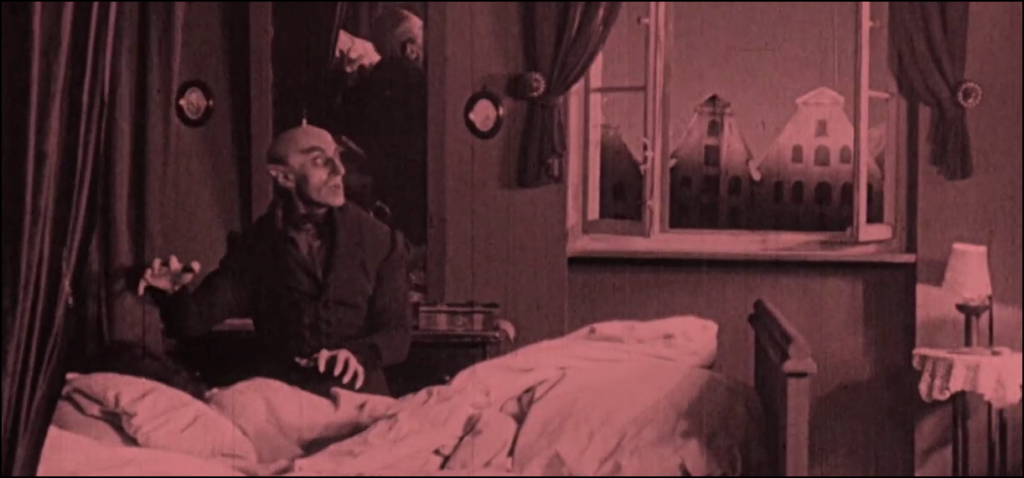
Nosferatu the Vampyre (1979)
Werner Herzog did something that many would consider unthinkable in 1979, and no, it was not remaking 1922’s Nosferatu; it was making a better version. Nosferatu: Phantom der Nacht (Nosferatu: Phantom of the Night), known as Nosferatu the Vampyre today, is one of those rarified films where the remake outshines the original. Written and directed by Werner Herzog, this German horror film is a stylized remake of F.W. Murnau’s original and seemingly amalgamated the texts of Nosferatu and Dracula into something arguably different. The film stars Klaus Kinski, Isabelle Adjani, Bruno Ganz, and Roland Topor.
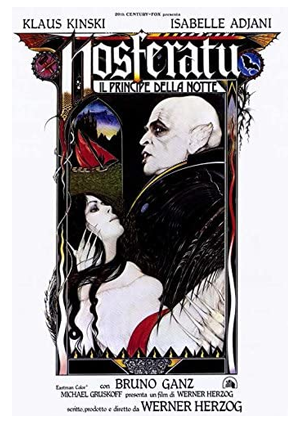
The plot is similar to that of the 1922 film but expanded upon with a new ending and extended sequences of travel.
And yes, while there is a German version and an English version, I suggest the German version. Subtitles will not hurt you.
So, this may be a controversial statement. I prefer this remake of Nosferatu to the original, and I think what Werner Herzog achieved in the film is faithful to the spirit and structure of the 1922 film and filled it in, adding and embellishing in the right spots to make the movie feel more whole. I am sure this will get me in trouble, but Nosferatu (1922) is the outline, whereas Nosferatu the Vampyre is the final draft. The film takes more directly from Dracula than the original, using the actual names of characters from the novel. Instead of Count Orlock, we have Count Dracula and our Jonathan Harker. Not everything is one-to-one; we get a combination of the characters of Lucy and Mina from the novel as a way to condense the film.
Frequent Herzog collaborator Jörg Schmidt-Reitwein’s cinematography is outstanding. The interplay of light and darkness within the film unsurprisingly reflects the struggle of the humans against the demonic vampire. It gives the film the shadowy appearance as a throwback to the high contrast of the 1922 prints. The film also has a strong eye toward places, with the natural landscapes of the Balkans serving as a stunning and creepy indication of how out of his depth Harker is. The city of Wismar in the film is often torn between being a lovely sight of civilization and one of utter menace; all it takes is a change of angle and lighting. The castle, an external ruin but an internal maze, becomes a character itself.
The score, handled by musical collective Popol Vuh is eerie and fitting and plays wonderfully set to the intercutting journeys between Harker and Dracula. The usage of the Georgian folk song “Tsintskaro” may not make sense at first, but when heard in the film becomes clear.
The performances across the board are excellent; in the time since Nosferatu, acting in the film had become more naturalistic. Klaus Kinski is fantastic as Count Dracula. His moments of conflict with Isabelle Adjani’s Lucy, a carryover from the original film, are some of the most compelling aspects of the film. Even the third wheel, Harker, in this version, has a somewhat more active role in the movie but never quite steps in the way of the focus: Dracula and Lucy. Hell, even the ESP-type connection between them makes a little more sense.
Joe Bob-servations on Nosferatu the Vampyre (1979)
There were a great many anecdotes and jokes about the wacky world of Werner Herzog during the host segments. All of them were very much appreciated by me, as someone who has a great deal of fascination with the filmmaker. This inevitably culminated with a rather epic and long skit full of Herzogisms about the nature of beer, the drive-in, and the universe itself. Austin Jennings did a fantastic job with his Herzog impression and the direction of the associated imagery. It was an incredible moment and possibly my favorite skit on the show ever.
The anecdotes on Herzog and the making of the film were, of course, fantastic. The “frenemy” relationship between Herzog and Klaus Kinski resulted in several hilarious and strange stories shared during the night, including the possible desecration of real mummies. In truth, Herzog should be a guest on the show. It doesn’t even need to be one of his movies. A conversation between Herzog and Briggs would be legendary.
Final Thoughts on Nosferatu the Vampyre (1979)
Werner Herzog’s Nosferatu the Vampyre is a richer film than Nosferatu. It fills the gaps within the original and uses the evolving language of film to do what I think F.W. Murnau would have done had the technology and understanding of cinema of 1979 been available to him in 1922. This might best be exemplified by the film’s opening credits, depicting mummies. They have little to do with the film itself, but if we’re aiming for Expressionism, the howling expressions of the desiccated dead do a lot to set the movie’s tone as a whole.
I’ve not even mentioned that this film has recorded dialogue as opposed to the silent nature of the 1922 version because I believe a silent-film edit of Herzog’s version would be on par with or better than Murnau’s.
Joe Bob Briggs gave the film four stars. I agree. I would give Nosferatu the Vampyre five out of five Cthulhus.
 (5 / 5)
(5 / 5)
Best Line: “The absence of love is the most abject pain.” – Count Dracula

Haunted MTL Drive-In Totals
We have our official totals from Shudder, as usual.
As for our totals, we have:
- 1 Joe Bob Cosplay
- 2 Darcy Cosplay
- 7 Crash landings by Murnau
- 4 utterances of “thee-ate-er”
- 11,000 Rats
- $896 Thousand Budget
- Giggling Madmen
- Crew Butchery
- Actor Blinding
- Rat Die Fu
- Seance Fu
- Pimp Joe Bob
- Gratuitous Herzogisms
- Pimp Shoes
- Vampire Joking
- Turtle Joking
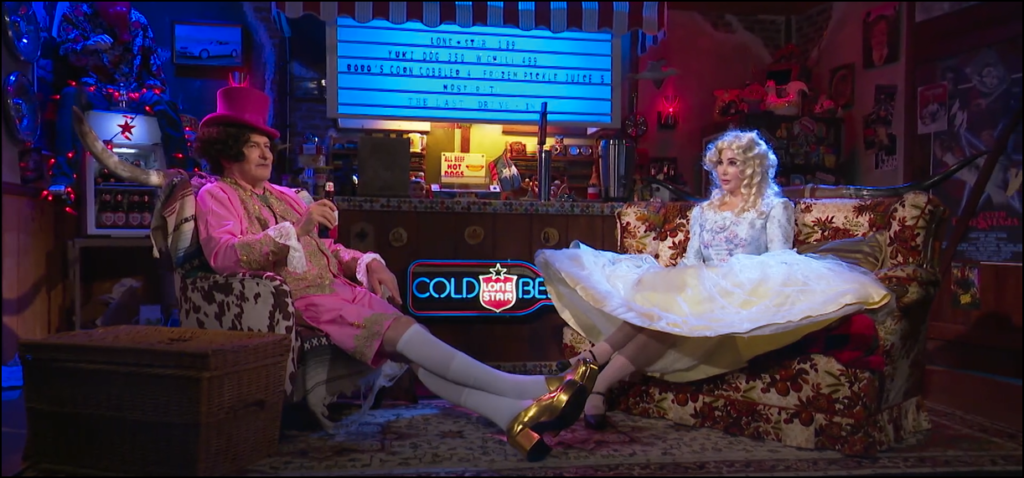
Episode Score for The Last Drive-In: S4E4 – Nosferatu and Nosferatu the Vampyre
This is one of the best nights we’ve had on the show. Easily in the top five for me. I know I have been a bit critical of the theming of the past two episodes, but the show bounced back excellently this week. It was almost as though this pairing was tailored specifically for me and my style of vampire story. Overall it was an amazing night, and Joe Bob, Darcy, John, and Austin assembled something special.
It was a fitting tribute to one of cinema’s earliest and most distinct monsters, and he is still as scary as he was a century ago. I would give this episode five out of five Cthulhus.
 (5 / 5)
(5 / 5)
With that, we are done until next time. Please join us again next week for another review and recap. What did you think, though? Why not share your thoughts in the comments about the show and the two films shown. Did you have a favorite?
Please join us on Twitter next Friday as we live-tweet with the rest of the Mutant Fam during The Last Drive-In with Joe Bob Briggs.
Want more of the Vampyre?
Please do yourself a favor and use our sponsored link to pick up a copy of Shadow of the Vampire (2001), an excellent companion piece to the films covered in this article.
Movies n TV
Wheel of Time A Question of Crimson Is a Political Espionage Delight
Episode two of Wheel of Time felt like the beginning of a long journey. Stories are unfolding, lives are changing, and blood is spilling.
Let’s discuss.
The story
We begin this episode in the past with Elayne’s mother, Queen Morgase. It turns out her rise to the throne was a bit, shall we say, cutthroat. So when she shows up at the White Tower, Siuan is concerned.
She might have reason to be, too.
Meanwhile, Rand, Egwene, Moiraine, Lan and Aviendha are in the Spine of The World. As they travel through some of the most breathtaking lands I have ever seen on a TV show, Egwene is plagued with nightmares. We think at first that’s just her trauma working itself through her system. But we soon find out that it might not be that straightforward.
Finally, Perrin returns home to heal after his hand is almost cut in half. But when he gets there he finds the town has been infested by Children of The Light. And they’re looking for him.
What worked
There was something heartwarming in this episode about political espionage and choking religious persecution. And that is Elayne’s relationship with her family.
I have consumed a lot of fantasy content with royal families. And I have never once heard a princess call her mother ‘Mum’. I’ve never seen royal siblings get along. And I have sure as hell never seen a princess have a good relationship with her step-parent.
This was refreshing. Even though Queen Morgase is kind of a horrible person she seems like a good mother. And that’s an unexpected delight.
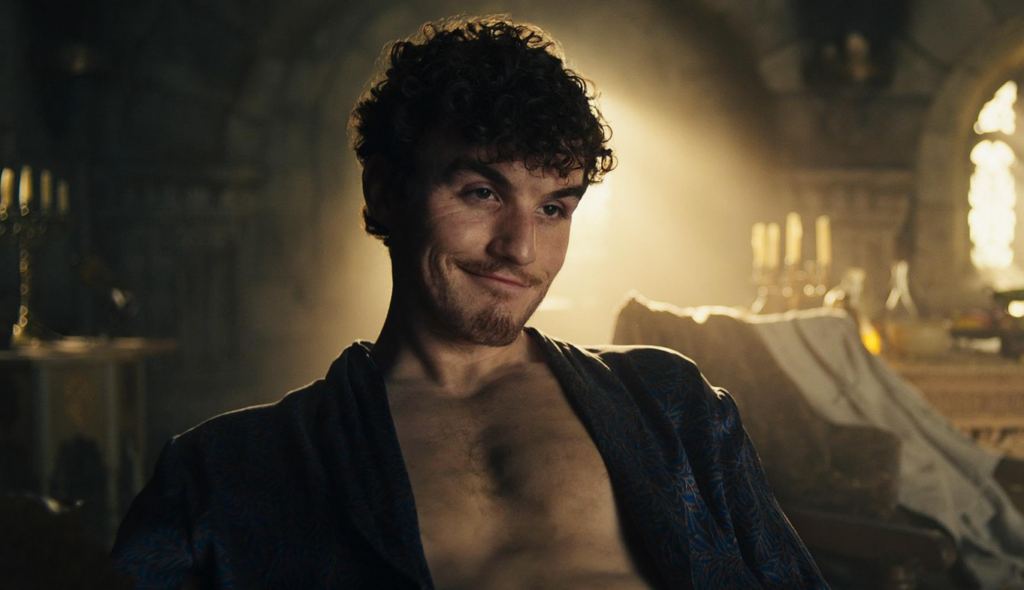
Of course, this is just one storyline among many. And while this can sometimes be overwhelming, in this case it wasn’t.
I’ll be honest, some of these storylines are going to drag for me. I know this because I’ve read some of the Wheel of Time books and I have an idea that not all the characters exactly pique my interest.
No one likes all the characters. No one likes all the storylines. While I am here for the political espionage between Queen Morgase and Siuan, not everyone likes it. While others might be fascinated with Selene trying to win Rand back, I couldn’t care less.
Having multiple storylines keeps everyone’s attention better. So long as things don’t get out of hand. Things can easily get out of hand. But this seems to be managed well.
So far.
What didn’t work
As I mentioned above, I’m not thrilled with Rand’s story at this point. And while it’s fine to not like a storyline when there are this many to choose from, it’s not fantastic that the one I like the least is the one involving our two main characters. And anytime we were with the team at the Spine of The World, the only thing that brought me joy was Moirain’s hat. It reminded me of Stockard Channing’s hat in Practical Magic.
The problem is that Rand is Charlie Brown with controversial magical powers. He is boring, serious, and pessimistic.
And yes, I understand that he has a heavy emotional burden and he’s the Dragon Reborn and that’s quite taxing and all. But let’s be fair, there isn’t a single person in this show that doesn’t have a heavy burden. And most of them manage to be fun occasionally.

All that being said, this episode of Wheel of Time did exactly what it needed to do. It set up conflicts at each of the three locations. It established emotional ties between the characters and the events. And it established goals for everyone.
This was, in short, a solid episode. Not groundbreaking, not mind-blowing or life changing. It was simply good. It was entertaining and moved the plot forward.
Well done.
 (3.5 / 5)
(3.5 / 5)
Movies n TV
Wheel of Time Returns With A Bang
Wheel of Time is back for season three. There are mixed feelings regarding this. Last season, there were some serious pacing issues. And some serious sticking to the book’s storyline issues. But we’re two seasons in, and we don’t give up so easily. So let’s dive into episode one, To Race the Shadow.
By the way, I highly recommend watching this episode with the subtitles on. You’ll see why.
The story
We begin this episode with Liandrin facing a trial of sorts for her rampant betrayal. She does her best to gaslight her Aes Sedai sisters into thinking that Siuan Sanche is the real traitor.
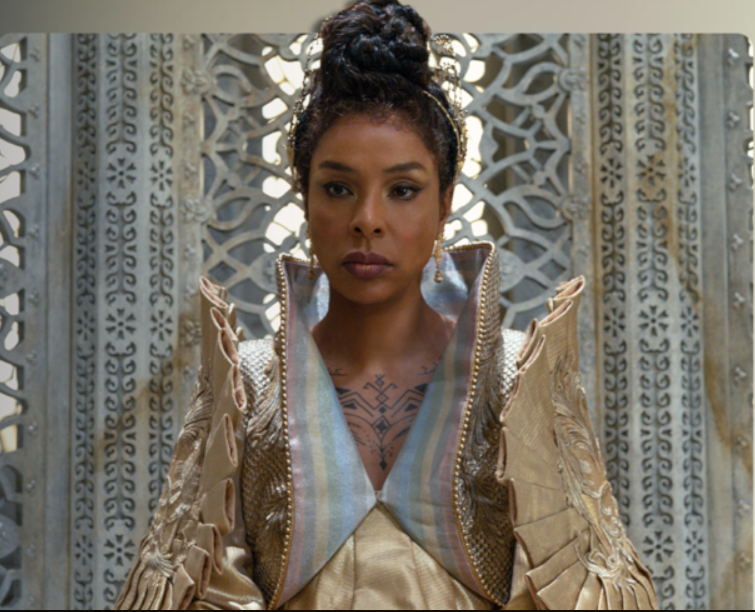
When that doesn’t work, she reveals how many Black Aes Sedai have actually infiltrated the tower.
Spoiler, it’s a lot.
In the aftermath, our whole team gathers to drink and enjoy one night of relaxation before they head out to the Tear to form an army for Rand. All is going well until they’re attacked by myriad creatures and a sentient axe.
What worked
This episode was long. It had a run time of an hour and eleven minutes. And a lot of that run time was spent in heavy dialog scenes.
Fortunately, these were well-done scenes.
If you’re going to have a lot of talking scenes, there are good ways and bad ways to do it. Last season, we saw lots of examples of the bad way to do it. But this episode did it well. For one thing, other things were going on while conversations were taking place. The characters are drinking, playing games, walking through an interesting city. And the scenes themselves didn’t stretch out. They weren’t repetitive. We heard what the character had to say, then we moved on.
It was also nice that the point of these scenes wasn’t just info dumps. We had character development. We had romantic interactions. We had plot development and foreshadowing.
Overall, this episode felt like what it was. A moment of calm before a storm.
Taking a step back, I’d be remiss if I didn’t address the fight scene at the start of the episode. Because it was epic.
The magic looked amazing. The martial arts that went along with it looked fantastic. The costumes were beautiful. It was just incredibly fun to watch.
More than that, it was emotional. We lost some characters in that fight that were important. And it was clearly emotionally shattering for many of our characters, who found themselves betrayed by people they trusted.
So many of them.
It was a great way to open the season.
What didn’t work
Despite that, this episode wasn’t without its flaws.
First off, there were a lot of dialog scenes. And they were good scenes, as I’ve already discussed. But it was one after another after another. And when your episode is, again, an hour and eleven minutes, it’s maybe a little much to have so much chit-chat. Couldn’t some of these conversations, important as they were, have been moved to maybe another episode?
Finally, I want to talk about Egwene’s travel through the arches.
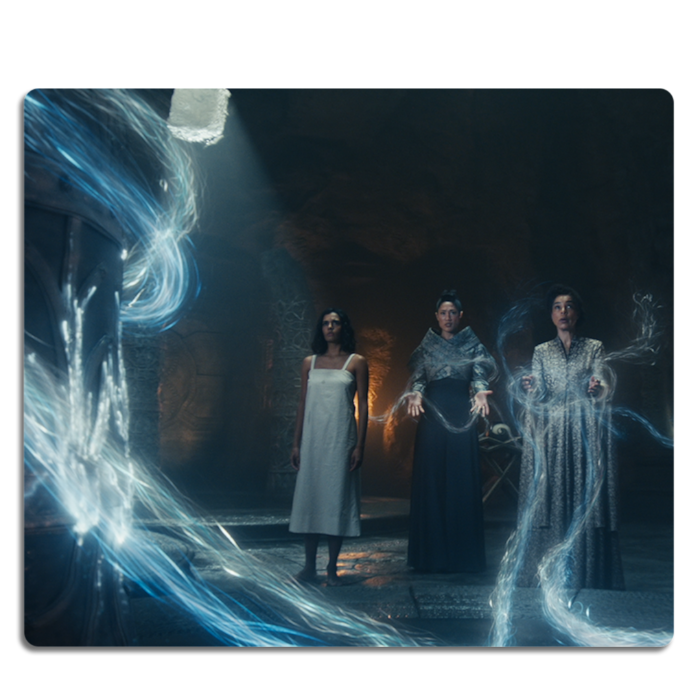
I feel like maybe there were some deleted scenes here. Because there must have been more to that visit than what we saw, right?
We could have seen Egwene battle Rand. That would have been badass and emotionally devastating. We could have seen her with a quiet life with Rand back home at the Two Rivers. We could have seen anything except for the quick clip of Rand in a bloody river, followed by Egwene being shoved back out in a bloody shift.
Bad job. But at least it wasn’t an extended scene of Moiraine collecting bathwater, and then taking a bath while looking sad. If we’d started this season with another scene like that, it might have broken my brain.
Amazon dropped the first three episodes at once. So we’ll be back soon to talk about episode two. See you then.
 (4 / 5)
(4 / 5)
Movies n TV
Entertaining as hell: Eight Legged Freaks (2002) Review
Early 2000s is a special era for the industry. It accepts the cheesiness and corniness of movie making, in turn producing some gems in their own right. Eight Legged Freaks starring David Arquette and young Scarlet Johanson is a horror comedy about giant spiders who overtake a small town. As crazy as that premise sounds, the movie surprisingly has a ton of heart and is super entertaining. Let’s review, shall we?
Plot
We start Eight Legged Freaks with a shot of toxic waste spilling into the water supply of Joshua, a spider farm owner. He is friends with Mike, one of our protagonists, who is a science geek and a spider enthusiast. Mike notices something quite right upon visiting Joshua, but no one takes him seriously. We are then introduced to the rest of the crew. Mike’s mother Samantha, the town sheriff, is too busy chasing Ashley, his sister, who is dating the town mayor’s son Bret (something Samantha does not approve of). We also have Chris, who returns to the town to save his father’s legacy in the town mines. He has opposition from Wade, Bret’s father, who wants to use the mines for his business ventures. Lots of drama going on that will only get juicier once the spiders get loose.
The creepy crawlies quickly dispose of Joshua and make their grand appearance after Ashley rejects Bret’s advances, abandoning him in the middle of a desert. A glorious chase sequence ensues as the spiders make their way towards the town, wreaking havoc on its residents. In a true horror fashion (which the movie acknowledges), it takes some convincing from Mike and then from Samantha for the town to take the threat seriously. The tongue-in-cheek style of narrative adds the comedy aspect to a movie that would otherwise burn out fairly quickly.
The remaining characters hide out in a shopping mall as it’s the only somewhat sturdy building in the area. This doesn’t last long as the spiders break in, forcing them to run through the mines. Their resources to fight the creepy crawlies off are limited as the methane gas doesn’t allow them to use firearms. Such conditions require resourceful thinking from Chris, who uses perfume to fend off the leader of the spider group and save himself during the climax of the movie.
Character dynamics are not forgotten once the action kicks in. We have Chris confessing his long-term feelings for Samantha which she knew all along, which provided some comedic relief. Bret also reunites with Ashley and apologises for being an asshole. Mike finally gets the appreciation he deserves as his knowledge saves the townsfolk more than once during the whole ordeal.
We end the movie with the town’s radio show person telling the story as an urban legend during his segment. This brings it into question – how much of it happened the way he said it did? We can only guess…
Overall thoughts
Eight Legged Freaks is a fun creature feature with some self-aware commentary on genre tropes that doesn’t take itself too seriously. The acting is good, the pacing fitting and the characters are likeable enough for you to want them to make it through. Definitely a must watch, if you don’t suffer from arachnophobia, that is.
 (5 / 5)
(5 / 5)

